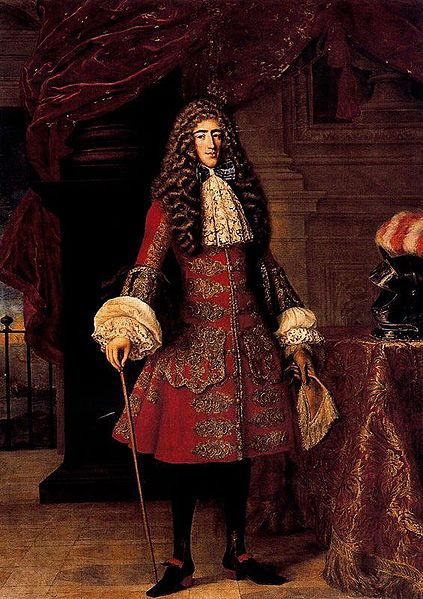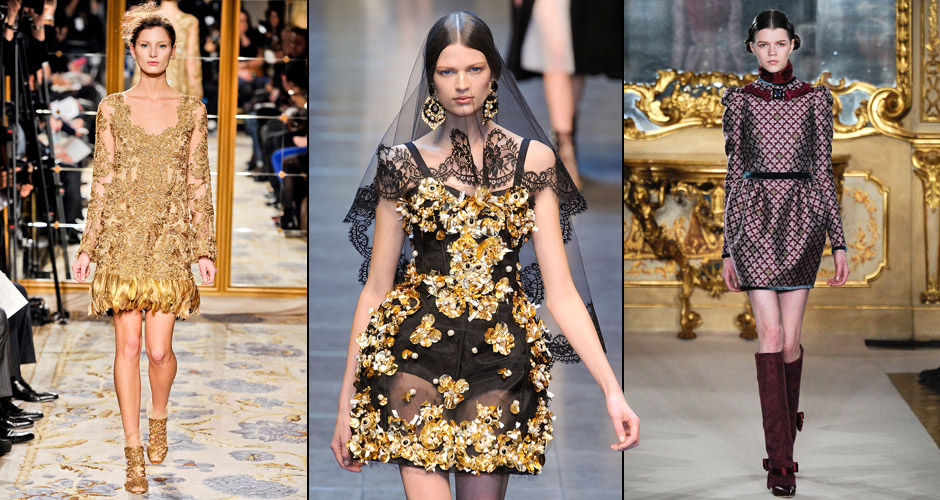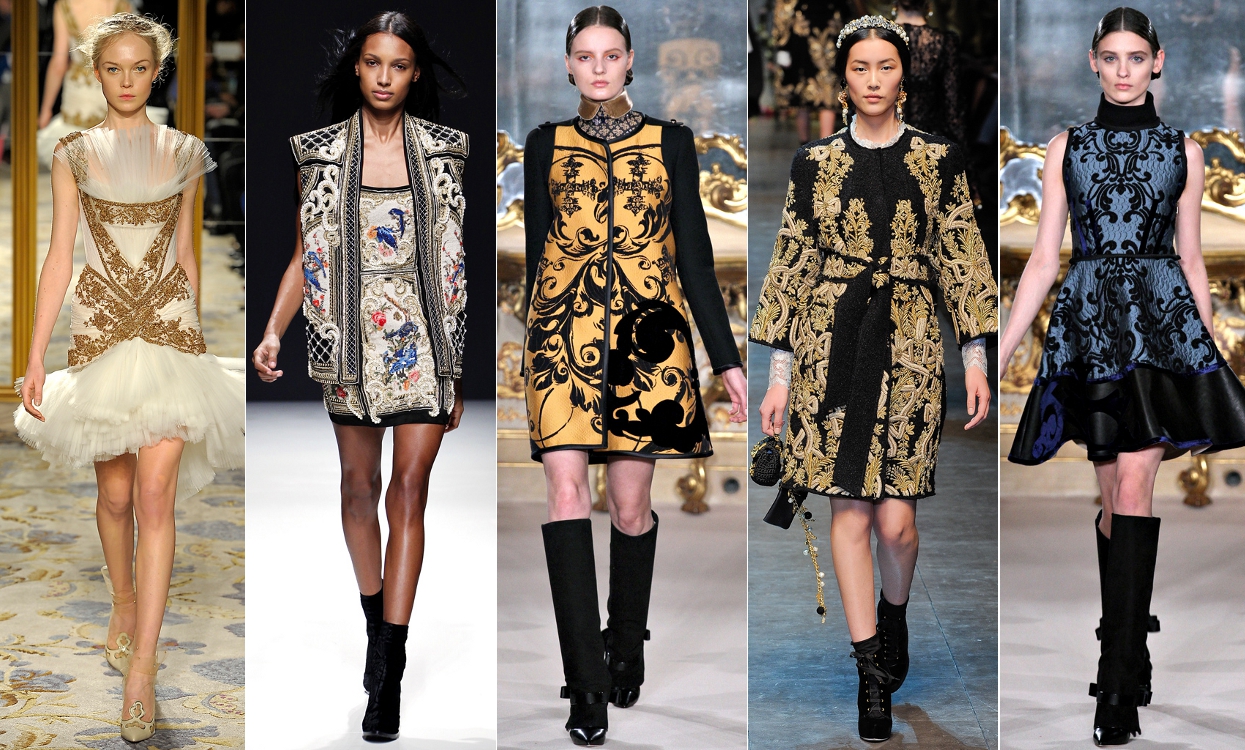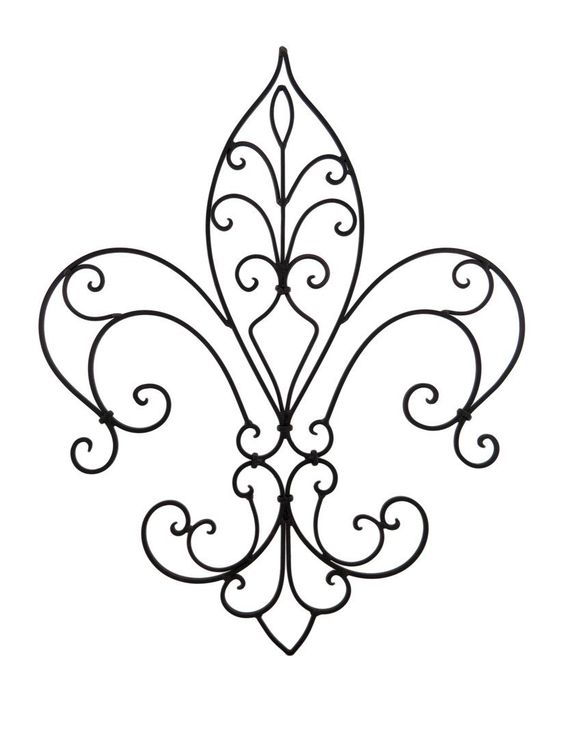
The Baroque Era kicked into motion during the early 1600s in Rome and spread across Europe, where strides were made in art, literature, architecture, music and fashion. Louis XIV, the Sun King revolutionized and changed the fashion trends which were a result of the Renaissance Era where there was excessive decoration of clothes. Contrasting and detachable pieces of clothing was used earlier but during the Baroque era, ensembles were made which matched through and through with regards to fabric and color; this concept of ‘en suit’ is what gave birth to the modern day suit. But one thing which remained constant was middle class copying trends from the Royalty and the Royalty in return invented new trends to stand apart from them. Fashion changed throughout the year as the concept of seasons was introduced. What sets the style of this ear apart is the replacement of the ruff with linen and broad laced collars. Dress-makers guilds were set into motion by Louis XIV which housed fashion designers who engaged themselves in making harmonious ensembles for the Nobility. natural, curving silhouettes, flowing lines, gold filigree, rich colors, and overall voluptuousness were the features which were common.

-Women’s Fashion
Women’s clothing became much less restricting. Flexible stays replaced hard, tight-fitting corsets. Flowing lace collars replaced stiff ruffs. Large farthingales were abandoned and skirts were merely layered or padded at the hips to produce a full, flowing look. Usually two skirts were worn, the overskirt (manteau) open at the front and usually forming a train or bustle at the back, and an underskirt. Decorative aprons became popular with the middle classes. The plunging neckline called the décolletage became common, often accompanied with wide lace collars. Waistlines were also high during the first part of the period, though long, pointed bodices and stiff stomachers came back during the latter half of the period. Sleeves were large, gathered at the wrist or elbow and often with turned-back lace cuffs. They progressively became more and more ruffled and segmented as the period progressed. Solid-colored silks and brocades were used more often than patterned fabrics, and usually decorations consisted only of lace, tied or rosetted ribbons, limited embroidery, and simple pearl jewelry.

Women’s clothing became a tad more practical as it allowed them to move more freely. Stretchable top wear replaced uncomfortable corsets, ruffs were replaced by flowing collars, farthingales which were gigantic were replaced by layered/padded, flowy skirts which had to layers i.e., manteau the overskirt which opened at the front to as there was a long train or bustle at the back and an underskirt.
Necklines were plunging and accompanied by wide lace panels, it was called décolletage by the people. High waistlines which were popular during the early stages of the baroque period transformed into pointed bodices during the latter. Aprons became popular among the commoners. Decorative elements such as lace, ribbons, embroidery and pearl jewellery were used to finish the garments.

-Men’s Fashion
Baroque men’s wear was much like women’s in terms of flexibility and ease of movement. High waist, wide lace collars, lace cuffs, high-knee boots, wide brimmed feather hats, pointed beard and loose hair. “the Three Musketeers” like pantaloon were seen.
Further along the way, men’s fashion became more elaborate and extravagant with Louis’ rule. Large collars were replaced with lace ruffles known as jabots. After the death of Louis XIV, fashion took another turn; breeches were more tight-fitting and tied, buttoned or buckled at the knee. Long coats with braid-trimmed button holes were popular. Sleeves were long and folded over. Wigs became larger and were powdered white.
-Children
Children in any social class dressed like miniature adults. Very poor children owned a single wool gown. The import on cotton was banned in this era. The lower class garments were made from wool where the upper class garments were made from silk and velvets.
Children of any social class looked like miniature adults. The upper class children wore silk and velvets whereas the poor wore woolen gowns.
-Hair Make-Up & Jewelry
Tight curls formed on the hairline and the sides of the head was popular among women. This hair-do was called as ‘heartbreakers’. Hairstyles known as ‘fontage’ which required the women to wear their hair higher than normal was trendy. Peers of the Realm used rouge on their lips and cheeks and covered their faces with an OG facemask/patch made out of silk and velvet.
They used more perfume than what is generally required as they didn’t bathe for days due to the misconception of water being bad for the skin.
-Footwear
The heel lost nothing of its popularity – but it wandered slowly towards the centre of the foot. The toe-caps used to be horribly pointed and walking in them was sure as fate very painful for the wearer. Cut-outs were a popular element for this time.
The shoes were closed with a buckle or tied with a band or were just to slip in. Those who could afford it had the shoes made of fine materials like high-quality leather, velvet or damask. Decorative elements increased the luxurious look even more. Patterns with high plateau heels used to protect the fine footwear from mud and dirt on the streets. Shoes acquired pointed toes and high heels, but women’s shoes were ironically much simpler than men’s.

-Accessories
Jewelry was very simple during this period, consisting of single strings of pearls or diamonds or sometimes a ribbon tied around the neck.
The usage of accessories depended upon the seasons. A veil was worn during the summer to protect the complexion along with a hand-held fan to cool oneself. In winters, women would step out with a fur muff, hood and a mask which covered the face almost entirely with holes for the eyes.
-The Commoners
The middle class on the other hand had a contrasting style sense although the contrast was not as significant as that of the poor class. The lower class fashion was dependent on the occupation one had. Women who worked for the middle class and upper class wore a small ruff, a linen chemise and a wool skirt along with an apron. Those who worked in the cities or the fields and had little or no contact with the elite would have had very plain woolen attire, like the fashions of previous generations in their caste. The middle class fashion was a mixed of both as it was fluctuating from member to member of the class community. The middle class wanted to dress like nobility, but were more morally conservative. While the general silhouette of their costumes changed, the middle class continued donning high necklines and ruffs, which had fallen out of trend.
-Baroque Inspired TV
- The Lady and the Highwayman, 1988
- The Last King 2003
- The Triumph of Love 2001
-Baroque Inspired Fashion


-References
-Period Dramas-The Baroque Era 1600-1750- imdb.com
-Baroque Era- baroquefashionandlifestyle.weebly.com
-Baroque 1600-1720- epochs-of-fashion.com
